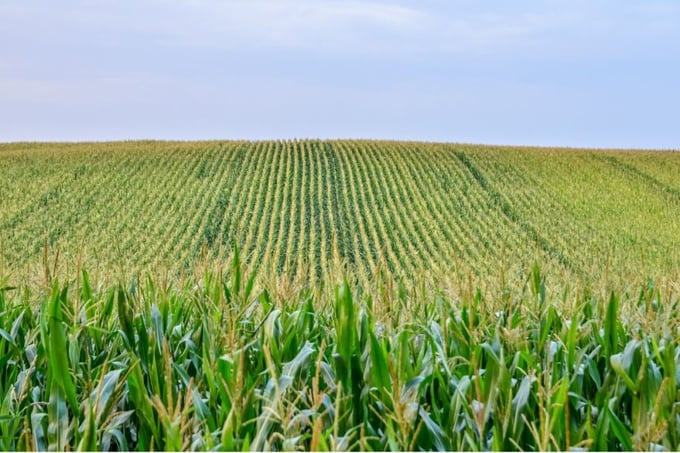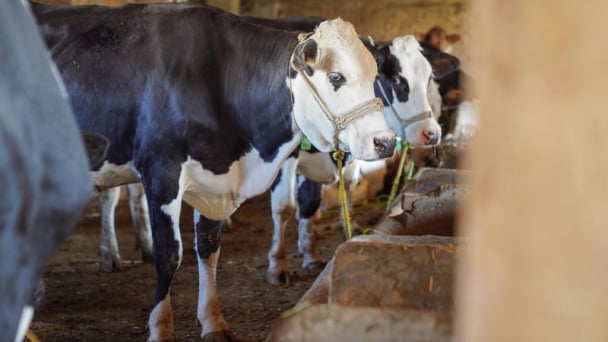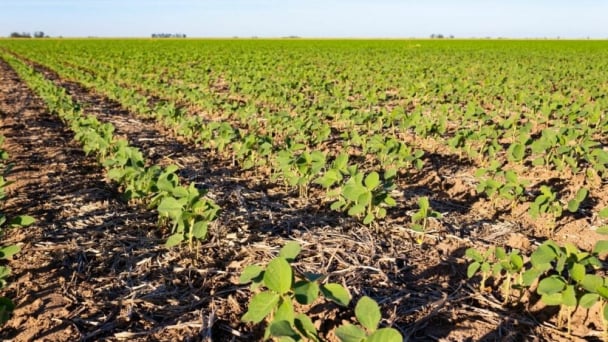May 16, 2025 | 20:40 GMT +7
May 16, 2025 | 20:40 GMT +7
Hotline: 0913.378.918
May 16, 2025 | 20:40 GMT +7
Hotline: 0913.378.918

Photo: STOCK.ADOBE.COM
The last several weeks have seen a mixed trend for maize (corn), although there was weakness in the United States on planting and yield expectations. The July World Agricultural Supply and Demand Estimates (WASDE) report from the US Department of Agriculture added more bullish ideas on demand to the factors involved.
In its Grain Market Report of July 18, the International Grain Council (IGC) said its sub-index for maize prices had “firmed in recent weeks, albeit with differing trends across the leading exporters.”
Pulled higher by gains in Ukraine and Brazil, average export prices rose by a net 2%, still 12% lower compared to a year ago, the IGC said.
“US maize futures worked lower, the spot September contract dropping by 6%, on bearishly perceived supply side fundamentals,” the IGC said. “News of larger-than-expected plantings and quarterly stocks sparked busy speculative fund selling in late June.
“More recent weakness stemmed from favorable domestic yield prospects, as crops entered the key pollination period under overall adequate soil moisture availabilities.”
The IGC also pointed to a slight decline in up-river prices in Argentina with limited fresh news, while there was “a firmer tone amid tepid grower selling interest,” in Brazilian export premiums, “with bottlenecks on river routes to Northern Arc ports reportedly adding to inland transportation costs.”
Barley rose in Europe as “harvest pressure was countered by a disappointing crop quality report,” the IGC noted.
Sorghum followed maize down in the United States, was lower on ample supplies in Argentina and was also cheaper in Australia on “an absence of fresh demand,” according to the IGC, which reported mixed US prices, while “a favorable 2024-25 crop outlook,” in Australia, is driving prices lower.
New crop rye in Germany was “underpinned by mixed harvest results,” it said, while “nominal values in Russia firmed.”
The US Grains Council (USGC) commented in its July 18 Market Perspectives publication that “USDA’s July WASDE (World Agricultural Supply and Demand Estimates) update surprised the market with stronger domestic feed demand and increased corn export demand in the 2023-24 marketing year.” It suggested that continuing “strong Mexican corn train demand likely prompted the increase in the export estimates.”
“US cattle on feed numbers and substantial hog feeding numbers are being supportive to corn basis levels in the western corn belt and indicate that feed usage is increasing,” the USGC said.
The USGC said 2024 production remains vulnerable for reduction.
“Last year’s US dryness in May and June prompted the dip in their yields from initial May levels,” the USGC said. “This wasn’t expected this year, but the current yield ideas remain optimistic.”
The European Confederation of Maize Production (CEPM) said in its Corn Market publication of July 17 that prices had fallen over the previous week, up to July 12, despite a positive close on Friday following a bullish USDA report for maize.
“In its July report, compared with June, the USDA revised US maize stocks for the 2024-25 marketing year down very slightly (to 53 million tonnes), whereas operators had been expecting a substantial rise linked to the increase in production (5 million tonnes), anticipated as a result of the increase in acreage announced at the end of June,” the CEMP said.
“These lower USDA stock forecasts come from a surprise drop (of 3.7 million tonnes) in stocks for the 2023-24 marketing year as a result of better-than-expected consumption for animal feed and exports,” the Paris-based Confederation said. “Despite this, US stocks remain high, and could increase in August with the first estimate of yields by sampling.”
(WG)

(VAN) Fourth most important food crop in peril as Latin America and Caribbean suffer from slow-onset climate disaster.

(VAN) Shifting market dynamics and the noise around new legislation has propelled Trouw Nutrition’s research around early life nutrition in poultry. Today, it continues to be a key area of research.

(VAN) India is concerned about its food security and the livelihoods of its farmers if more US food imports are allowed.

(VAN) FAO's Director-General emphasises the need to work together to transform agrifood systems.

(VAN) Europe is facing its worst outbreak of foot-and-mouth since the start of the century.

(VAN) The central authorities, in early April, released a 10-year plan for rural vitalization.

(VAN) Viterra marked a significant milestone in its carbon measurement program in Argentina, called Ígaris, reaching 1 million soybean hectares measured.